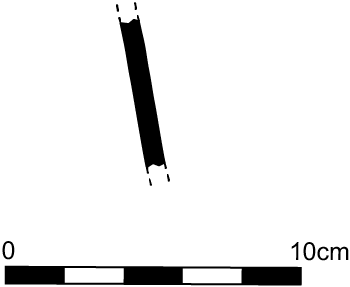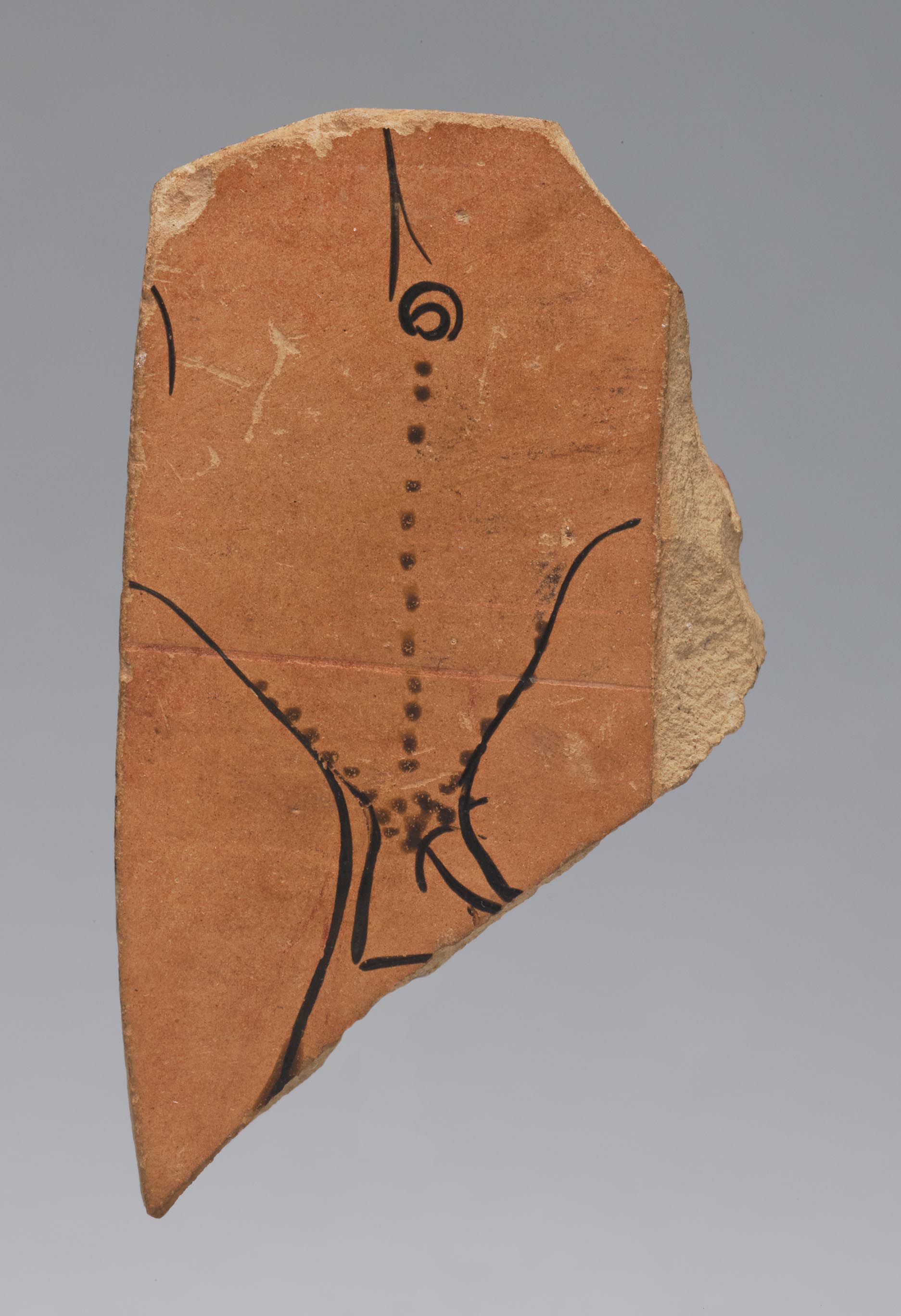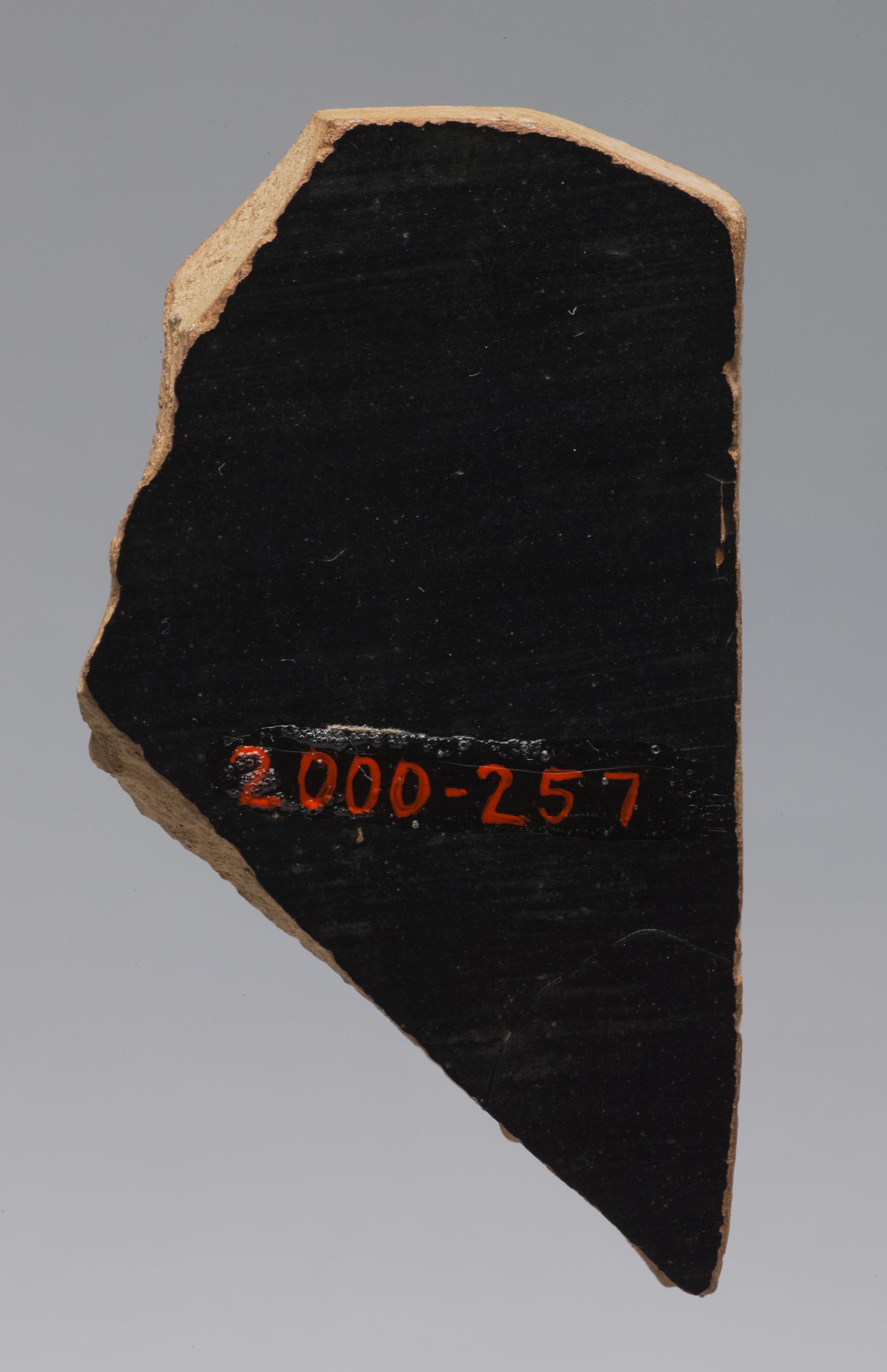Provenance
2000, gift, F. Williamson Price (New York, NY) to Princeton University.
Shape and Ornament
Single fragment from the body of a krater of undetermined type. Interior black. No ornament preserved.

Subject
Nude male. The fragment preserves the frontal belly and loins of a nude male, as well as parts of his upper thighs and genitals. A dotted line of hair extends along the linea alba from the navel to the pubic hair, which is also dotted.
Attribution and Date
Unattributed. Late fifth century BCE.
Dimensions and Condition
5.1 × 3.2 cm; thickness 0.8 cm. Broken on all sides. Minor scratching on the surface, most prominently to the left of the navel. Indented line running across the contours of the lower abdominal muscle.
Technical Features
Contours of the figure are not preserved. Accessory color. Dilute gloss: belly and pubic hair.
Bibliography
Abbreviation: Princeton RecordRecord of the Princeton University Art Museum. (1942– ). 60 (2001): 89 [not illus.].
Comparanda
The thickness, slight curvature, and hard, shiny black gloss on the inside suggests that the fragment belonged to a rather large krater, most likely a bell- or calyx-krater. The figural drawing has a number of rather distinctive details, in particular the dotted belly hair and the rectilinear scrotum. Both of these features, as well as the split central line for the linea alba above the navel, occur on the Painter of the New York Centauromachy’s name-vase: New York 06.1021.140 (Abbreviation: ARV2J. D. Beazley. Attic Red-Figure Vase-Painters. 2nd ed. Oxford, 1963 1408.2; Abbreviation: BAPDBeazley Archive Pottery Database. http://www.beazley.ox.ac.uk 217910). The use of dotted dilute gloss for the belly hair seems to be the preferred method of execution for several late fifth-century painters of large pots, such as the Pronomos Painter and the Suessula Painter, whom Robertson (Abbreviation: Robertson, Art of Vase-PaintingM. Robertson, The Art of Vase-Painting in Classical Athens. Cambridge, 1992, 259) considered to be close in style to the Painter of the New York Centauromachy: cf., near the Pronomos Painter, Naples 81521 (Abbreviation: ARV2J. D. Beazley. Attic Red-Figure Vase-Painters. 2nd ed. Oxford, 1963 1338; Abbreviation: BAPDBeazley Archive Pottery Database. http://www.beazley.ox.ac.uk 217517); by the Suessula Painter, Paris, Louvre S 1667 (Abbreviation: ARV2J. D. Beazley. Attic Red-Figure Vase-Painters. 2nd ed. Oxford, 1963 1344.1, 1691; Abbreviation: BAPDBeazley Archive Pottery Database. http://www.beazley.ox.ac.uk 217568). Princeton’s fragment can be placed reasonably within this milieu of the very late fifth century.

